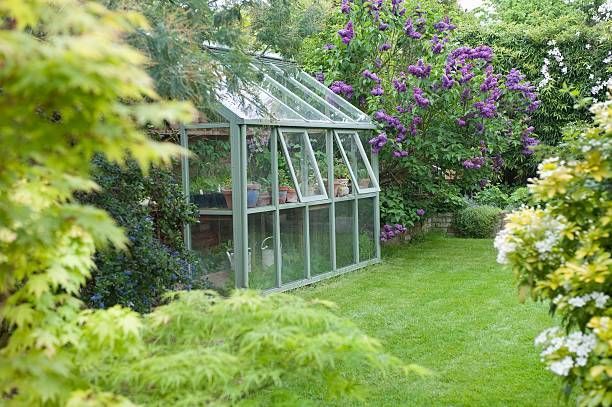The Future of Greenhouses: Developments in Sustainable Farming
Are you interested concerning the future of greenhouses and how they are changing sustainable agriculture? From sophisticated environment control systems to upright farming techniques, water-efficient irrigation techniques, eco-friendly power integration, and clever data analytics, these developments are transforming the method we grow our food.
Advanced Climate Control Solution
To accomplish optimum expanding conditions, you can depend on the advancements in greenhouses with advanced climate control systems. These systems have actually revolutionized the way we cultivate crops, providing a controlled atmosphere that contributes to plant growth. With these cutting-edge systems, you can now manipulate temperature level, moisture, light degrees, and even CO2 focus to develop the excellent problems for your plants to flourish.
One of the essential features of these advanced environment control systems is their capability to regulate temperature. By utilizing sensors and automated controls, the greenhouse can adjust the temperature level based on the details needs of the plants. This ensures that they are never ever revealed to extreme heat or cool, which can be destructive to their growth.
Humidity control is an additional essential facet of these systems. By keeping the optimal humidity degrees, you can stop problems such as mold and mildew, mold, and disease from influencing your crops. These systems can likewise regulate the amount of light that gets to the plants, making certain that they obtain the optimum amount for photosynthesis.
Furthermore, advanced climate control systems can also adjust carbon dioxide concentrations. By increasing the degrees of CO2 in the greenhouse, you can enhance plant growth and efficiency. This is especially advantageous in locations with low all-natural CO2 degrees.
Vertical Farming Strategies
One essential upright farming method is making use of piled growing systems. Stacked expanding systems are typically used in urban areas where area is restricted.
One preferred technique is recognized as upright hydroponics, where plants are grown in nutrient-rich water without soil. This method is very efficient as it minimizes water use by approximately 90% compared to traditional farming techniques. Additionally, since the plants are expanded inside, they are secured from bugs and illness, lowering the demand for chemicals.
One more method is aeroponics, which involves suspending the plant origins in a haze or air setting. This approach permits for optimum nutrient absorption and oxygenation, causing faster growth and greater returns. Aeroponics additionally makes use of much less water than conventional farming and can be implemented in vertical systems, making it a preferred selection for upright farming.
Water-efficient Irrigation Techniques
Taking full advantage of water conservation is vital when it concerns executing water-efficient irrigation methods in sustainable farming. With worldwide water scarcity coming to be a pressing concern, it is vital to establish cutting-edge strategies that enhance water use in greenhouse procedures.
One promising approach is drip irrigation, which delivers water straight to the plant roots, lessening waste and evaporation. By using a network of tubes with tiny emitters, water is used gradually and exactly, guaranteeing that plants receive the essential wetness without excess drainage.
One more reliable technique is making use of dirt moisture sensors. These tools gauge the dampness content in the dirt and provide real-time information to farmers. By keeping an eye on the soil's dampness levels, farmers can precisely determine when and how much water to use, avoiding over-irrigation.
Furthermore, the implementation of rainwater harvesting systems is obtaining appeal in greenhouse agriculture. Collecting rain from roofs and saving it in tanks permits farmers to utilize this natural deposit for watering objectives, lowering reliance on typical water resources.
Finally, the adoption of automated watering systems can considerably enhance water efficiency. These systems utilize sensing units to find soil wetness degrees and climate condition, changing watering timetables as necessary. By optimizing water usage based on real plant demands, these systems can decrease water waste and promote sustainable farming techniques.
Renewable Resource Integration
Sustainable power assimilation in greenhouses offers a number of advantages, consisting of decreased running costs and reduced dependence on non-renewable energy resources. The created power can then be made use of to run numerous procedures within the greenhouse, such as lights, ventilation, and heating systems. These turbines harness wind power and transform it right into electrical power, which can be utilized to supplement the power requirements of the greenhouse.
Smart Data Analytics and Automation
To improve the efficiency of your greenhouse procedures and maximize resource application, take into consideration executing smart information analytics and automation. Smart information analytics involves collecting and lawn scarifier examining information from different sensing units and gadgets within your greenhouse. By checking aspects such as temperature, humidity, light degrees, and dirt dampness, you can acquire valuable understandings into the wellness and development of your plants. This data can help you make informed choices about adjusting ecological conditions, optimizing watering schedules, and preventing prospective concerns before they arise.
This can consist of automating the control of lights, ventilation, watering systems, and nutrient delivery. By automating these procedures, you can ensure that your plants get the best conditions and nutrients at the appropriate time, without the demand for consistent hands-on treatment.
Moreover, clever data analytics and automation can collaborate synergistically. The information gathered by sensors can be made use of to educate computerized systems, allowing them to make real-time changes based on the current problems. go to this web-site This integration of data analytics and automation can cause extra precise and effective resource appropriation, ultimately resulting in greater returns and much better plant quality.
Verdict
Finally, the future of greenhouses in lasting agriculture looks promising. With sophisticated environment control systems, vertical farming techniques, water-efficient watering approaches, and renewable resource assimilation, greenhouses are coming to be much more eco friendly and efficient. Additionally, using wise data analytics and automation better improves efficiency and minimizes waste. These developments are leading the way for a much more effective and lasting agricultural sector, ensuring a greener and healthier future for all.

By enhancing water use based on real plant requirements, these systems can minimize water waste and promote sustainable farming methods.
